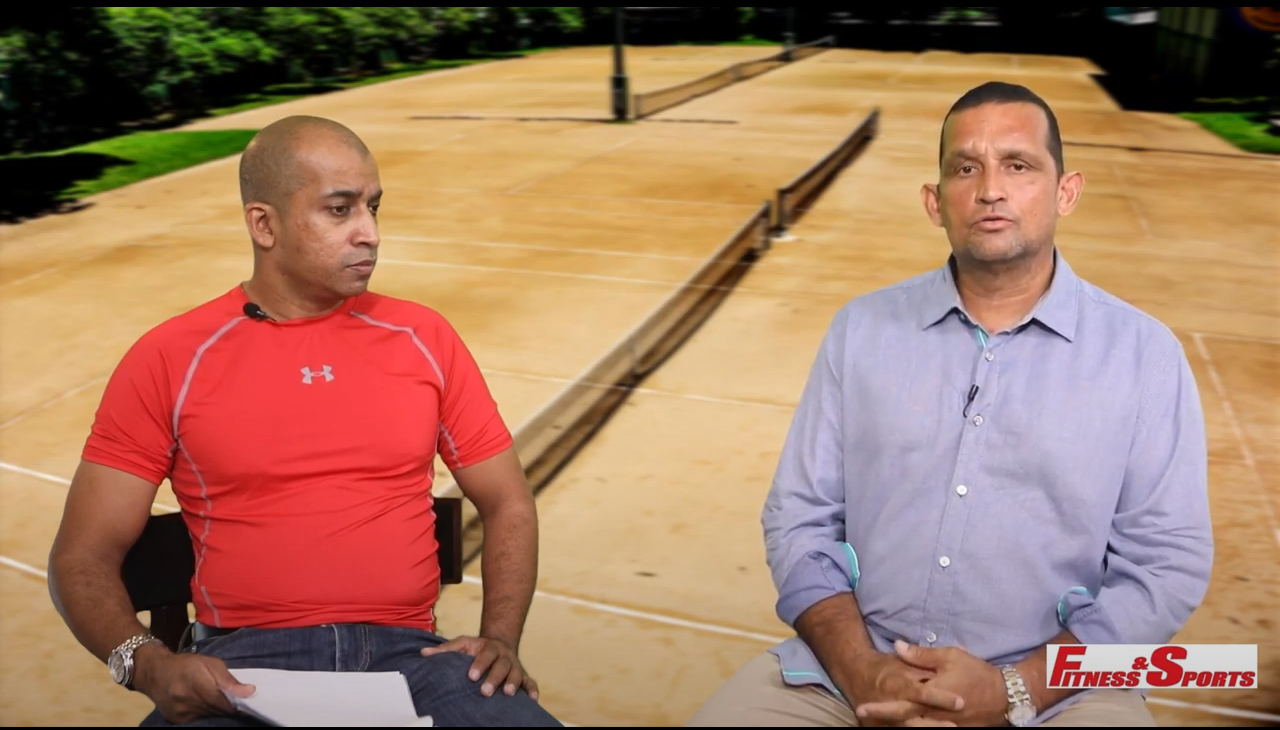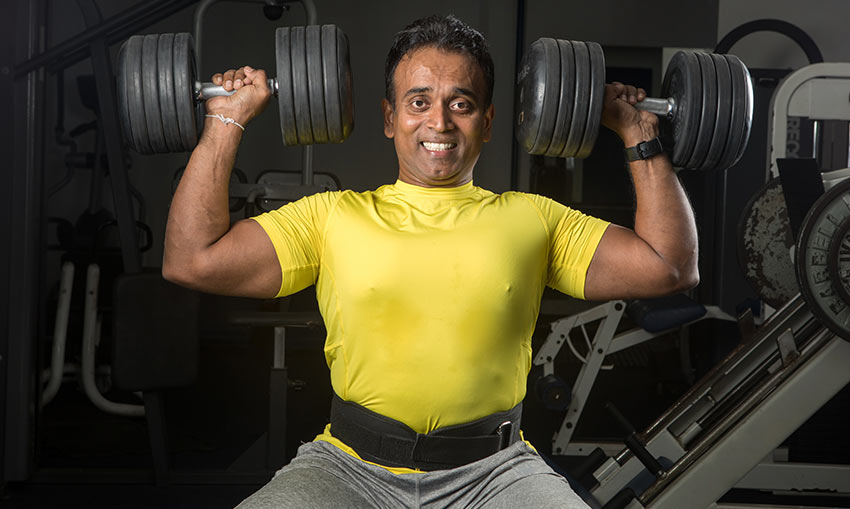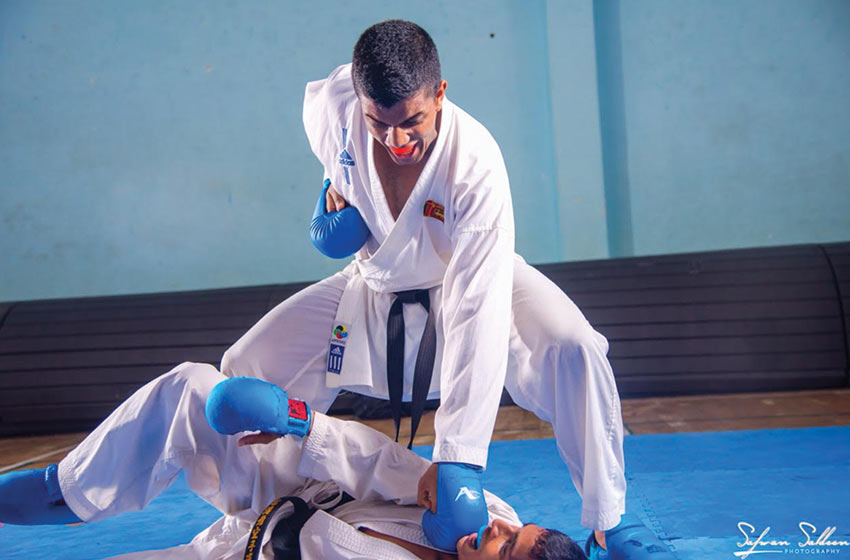
Warning: Illegal string offset 'single_ad_position' in /home/fitnessandsports/public_html/wp-content/themes/vinkmag/vinkmag/core/hooks/blog.php on line 187
Functional movements are movements based on real world situational Bio-Mechanics. 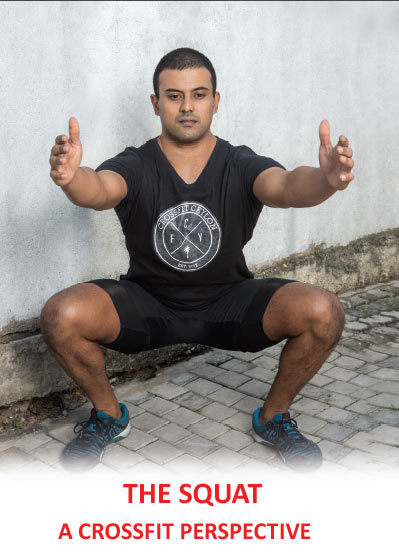 They generally involve multi-plane and multi joint movements which place a demand on the body’s core musculature. The rise of functional movement within the fitness industry has been due to the immense popularity of fitness protocols such as CrossFit, Olympic Weightlifting, Power lifting and Yoga. The Squat is a staple movement in all fitness protocols as it is one of the most powerful tools to develop athleticism, strength, power, flexibility, mobility and also hip health, spine health and digestive health.
They generally involve multi-plane and multi joint movements which place a demand on the body’s core musculature. The rise of functional movement within the fitness industry has been due to the immense popularity of fitness protocols such as CrossFit, Olympic Weightlifting, Power lifting and Yoga. The Squat is a staple movement in all fitness protocols as it is one of the most powerful tools to develop athleticism, strength, power, flexibility, mobility and also hip health, spine health and digestive health.
The Importance of The Squat For CrossFit
The squat is fundamentally the most important human movement function. Due to this very important fact, we prioritize the movement in our program.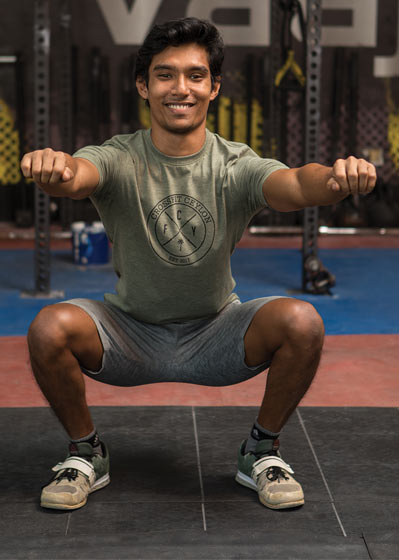 It is the first movement that every CrossFit Affiliate will teach you (if the affiliate does not address that first, you should question their methodology) mainly because it is such a frequently reoccurring movement that shows up in the form of many movements. Aside from the 3 foundational squat patterns that we teach, we also need to squat in a multitude of other movements such as thrusters, wall ball shots, snatches, clean and jerks, medicine ball cleans and it even applies to movements such as box jumps, where the landing position is essentially the bottom of a squat. That being said, if you learn how to squat properly, it teaches the body how to efficiently create hip extension. The ability to fully extend the hips is the basis to developing power, thus, a well trained squat will translate in to better running, jumping, throwing and punching which are key patterns to any athletic movement
It is the first movement that every CrossFit Affiliate will teach you (if the affiliate does not address that first, you should question their methodology) mainly because it is such a frequently reoccurring movement that shows up in the form of many movements. Aside from the 3 foundational squat patterns that we teach, we also need to squat in a multitude of other movements such as thrusters, wall ball shots, snatches, clean and jerks, medicine ball cleans and it even applies to movements such as box jumps, where the landing position is essentially the bottom of a squat. That being said, if you learn how to squat properly, it teaches the body how to efficiently create hip extension. The ability to fully extend the hips is the basis to developing power, thus, a well trained squat will translate in to better running, jumping, throwing and punching which are key patterns to any athletic movement
To Increase The Body’s Ability To Exert Maximum Force And Maintain Good Posture
There is no doubt that the king of strength is the squat. The squat is used as the most effective way to not only gain lower body strength, speed and power but to also increase the bodies overall ability to apply maximal force. Not only are the legs creating concentric (shortening of the muscle) and eccentric (lengthening of the muscle) under large loads but the core is acting as a stabilizer to keep the spine upright, and in order to stabilize the spine, there is a fairly good amount of mobility required otherwise the spine will get into awkward positions and cause the body to have to compensate, which is never a good thing.
A Basic Human Movement
As one of the most primitive movements patterns of the human being there are a wide variety of health benefits of the squat whether it is used to gain strength or used just to sit down in a rested a position. Throughout human history humans have used the squat as a means to rest, defecate and congregate at meetings or events. As babies we are born with the functional capability to move in and out of the squat very freely and without any restriction, but as we get older the need for the squat becomes substantially less important and therefore the body will naturally adapt to its new movement requirements and adjust to the positions that are more prevalent in our lifestyle. This causes a multitude of issues that range from joint pain, muscular pain, lack of blood circulation and even digestive issues.
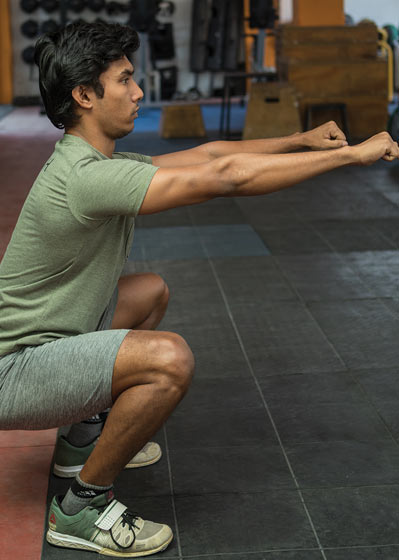 The nature of the squat is such that it requires the body to use an incredible amount of muscle fiber in order to perform the movement. That recruitment of muscle fiber causes the body to secrete Growth Hormone and elevate testosterone levels in the body to where there is a physiological change that takes place. This causes the body to expend a large number of calories because of the body’s duty to produce muscle to support this activity. This process help regulate glucose, lipid metabolism and insulin sensitivity which plays a major role in preventing obesity, diabetes and cardiovascular disease.
The nature of the squat is such that it requires the body to use an incredible amount of muscle fiber in order to perform the movement. That recruitment of muscle fiber causes the body to secrete Growth Hormone and elevate testosterone levels in the body to where there is a physiological change that takes place. This causes the body to expend a large number of calories because of the body’s duty to produce muscle to support this activity. This process help regulate glucose, lipid metabolism and insulin sensitivity which plays a major role in preventing obesity, diabetes and cardiovascular disease.
Health Benefits From Squatting
Improve blood circulation: Poor circulation can cause numbness and tingling sensations in the extremities of the body and can also lead to headaches. 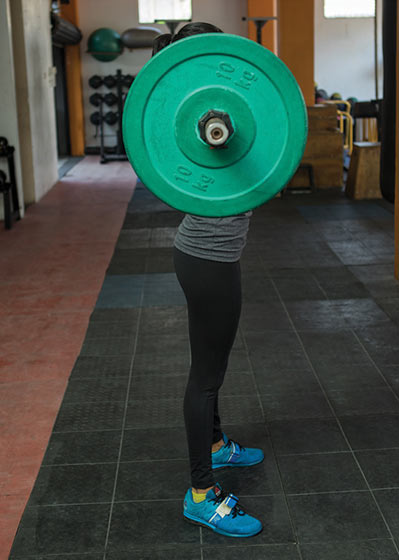 The circulatory system relies heavily on bodily movement to increase oxygen flow and squatting is a full body movement that promotes this.
Increase flexibility and prevent injuries: Flexibility and mobility is a key component to living a pain free life and the squat is a movement that requires range of motion in the hips, spine and ankles. Optimum range of motion is a key component to allowing the body to move well and pain free. Our tendons and ligaments become less elastic as we age and keeping tabs on our flexibility and mobility will delay this process.
Enable better posture: the range of motion improvements will translate in to better posture when walking and navigating through your day to day activities and, thus, a pain free life.
Remove toxic waste: getting into a rested squat puts the bowels in to a position where it allows us to freely release waste out of our body.
Balance and mobility: as you spend more time in the bottom of the squat, balance, mobility and awareness of getting your body in to strong positions increase. Being balanced and mobile is one of the key components to staying injury free.
The circulatory system relies heavily on bodily movement to increase oxygen flow and squatting is a full body movement that promotes this.
Increase flexibility and prevent injuries: Flexibility and mobility is a key component to living a pain free life and the squat is a movement that requires range of motion in the hips, spine and ankles. Optimum range of motion is a key component to allowing the body to move well and pain free. Our tendons and ligaments become less elastic as we age and keeping tabs on our flexibility and mobility will delay this process.
Enable better posture: the range of motion improvements will translate in to better posture when walking and navigating through your day to day activities and, thus, a pain free life.
Remove toxic waste: getting into a rested squat puts the bowels in to a position where it allows us to freely release waste out of our body.
Balance and mobility: as you spend more time in the bottom of the squat, balance, mobility and awareness of getting your body in to strong positions increase. Being balanced and mobile is one of the key components to staying injury free.
Developing The Squat
The squat can be tested and trained in many ways. 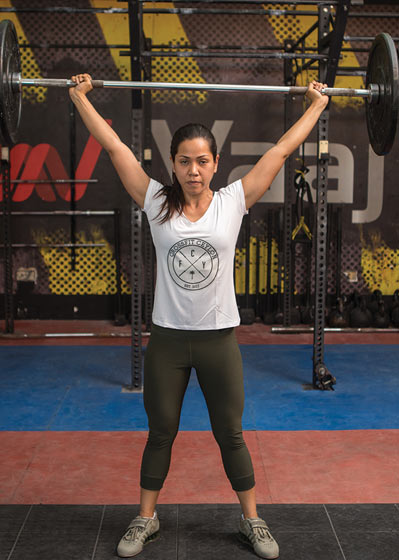 It can be used to improve strength, power, hypertrophy and endurance. The key will be your goals and how you manage the reps, rest and sets.
It can be used to improve strength, power, hypertrophy and endurance. The key will be your goals and how you manage the reps, rest and sets.
Strength :
To develop Maximal strength you will have to perform 3-5 sets of 1-2 reps at around 90%-100%++ of your max.
To develop strength and power you will have to perform 3-5 sets of 2-4 reps at around 80%-90% of your max.
Hypertrophy:
This is generally known as the muscle building rep range and where the body spends a lot of time under tension because of the rep/set scheme.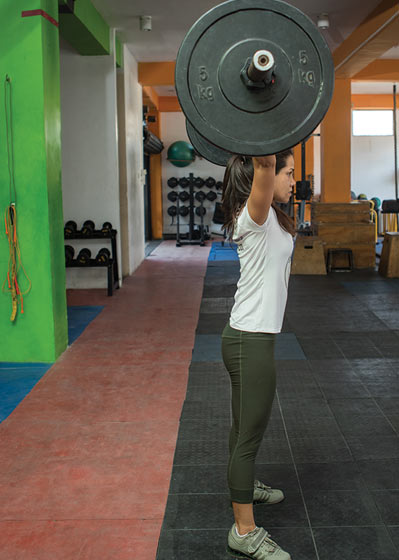 3-5 sets of 8-12 reps @ 60%-75% of your max is where you need to be in order to create the stimulus needed to reap the benefits of muscle growth that this protocol offers
3-5 sets of 8-12 reps @ 60%-75% of your max is where you need to be in order to create the stimulus needed to reap the benefits of muscle growth that this protocol offers
Endurance:
Muscular endurance is a key component to every sport. The muscle ability to perform work and constant concentric and eccentric contractions over an extended period of time is monumental. In many cases, it is what wins and loses Championships.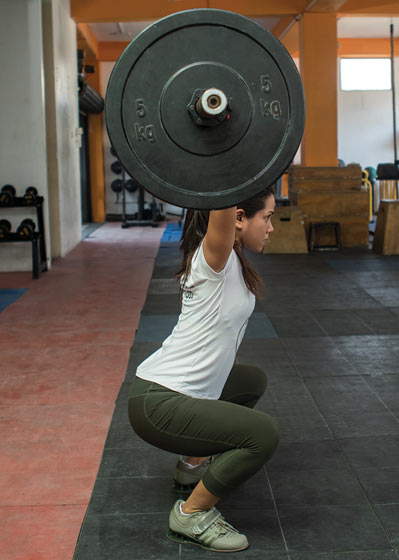 To develop Muscular endurance you will need to perform 4-10 sets of 15+ reps @50% or less. The more reps that you can do at a higher percentage will be the goal.
To develop Muscular endurance you will need to perform 4-10 sets of 15+ reps @50% or less. The more reps that you can do at a higher percentage will be the goal.
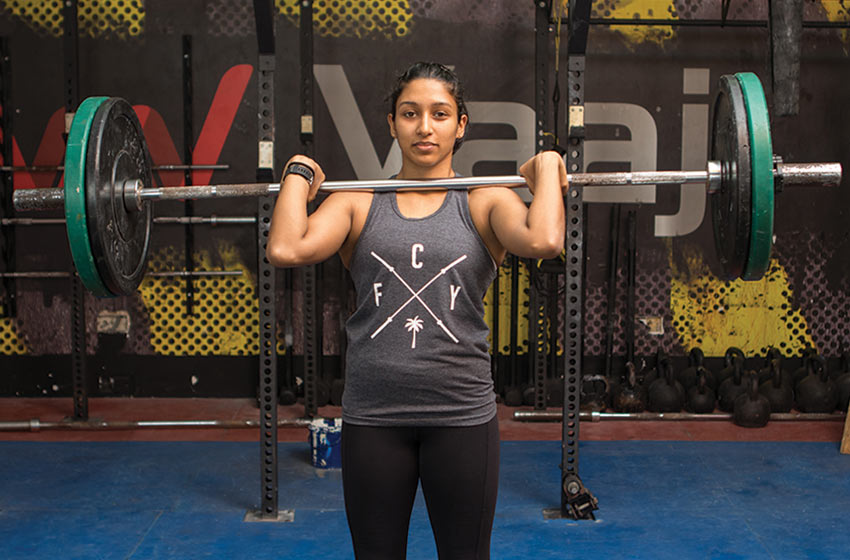 All of these protocols will require around 3-5 minutes rest between sets.
There you have it, all the protocols that you will need to get stronger, faster, leaner and more muscular regardless of what your goals may be.
All of these protocols will require around 3-5 minutes rest between sets.
There you have it, all the protocols that you will need to get stronger, faster, leaner and more muscular regardless of what your goals may be.
WHO CAN DO CROSSFIT?
This is the major question, one that I get asked all the time.  Most people assume that they have to get fit before they can even step in to a CrossFit gym. This is entirely not true. Yes, it is true that there are people that are in the gym that are throwing heavy unfathomable weights around, walking on their hands, doing muscle ups and running all as part of one workout, but none of them started there. Nobody comes in ready for this, we progress you slowly through the program, and we take you through foundations and explain how important technique is. You are only as strong as your foundation, so without the basic motor patterns and awareness everything else is of no use. Like the CrossFit journal mentions “The needs of our Olympic athletes differ by degree, not kind”. Regardless of what you have heard about CrossFit, I encourage you to give this program a shot. It might just change your life, just like it did for me and countless other individuals around the world. If you wish to give this elite fitness regimen a try you could email me at
Most people assume that they have to get fit before they can even step in to a CrossFit gym. This is entirely not true. Yes, it is true that there are people that are in the gym that are throwing heavy unfathomable weights around, walking on their hands, doing muscle ups and running all as part of one workout, but none of them started there. Nobody comes in ready for this, we progress you slowly through the program, and we take you through foundations and explain how important technique is. You are only as strong as your foundation, so without the basic motor patterns and awareness everything else is of no use. Like the CrossFit journal mentions “The needs of our Olympic athletes differ by degree, not kind”. Regardless of what you have heard about CrossFit, I encourage you to give this program a shot. It might just change your life, just like it did for me and countless other individuals around the world. If you wish to give this elite fitness regimen a try you could email me at
andrewsandycf@gmail.com
or reach me at 076 31 1288
Warning: Illegal string offset 'single_ad_enable' in /home/fitnessandsports/public_html/wp-content/themes/vinkmag/vinkmag/core/hooks/blog.php on line 204
Warning: Illegal string offset 'single_ad_position' in /home/fitnessandsports/public_html/wp-content/themes/vinkmag/vinkmag/core/hooks/blog.php on line 205

